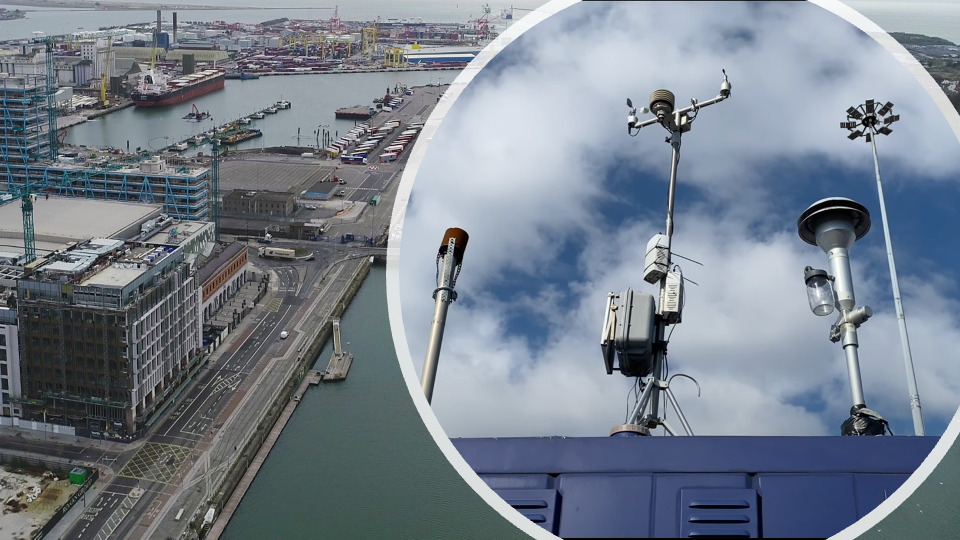Navigating the Future of Clean Air
Dublin PortAIR Project and AirScape’s Pioneering Role
Introduction
Ship emissions contain sulfur oxides, nitrogen oxides, and particulate matter impacting human health and the environment. Transport and other port activities also contribute to emissions affecting air quality. 85% of all shipping to and from Ireland flows through Dublin Port, magnifying this initiative’s importance. In collaboration with the Centre for Research into Atmospheric Chemistry (CRAC) at UCC and the Centre for Climate & Air Pollution Studies (C-CAPS) in NUIG, this project serves as a template for port cities with similar challenges.
Methodology
The project combines continuous monitoring of pollutants, an intensive field campaign during peak shipping activities, and detailed source models. This approach provides quantitative estimates of pollution sources affecting Dublin’s air quality. Innovative low-cost sensor nodes are strategically deployed across nine locations around the port to generate a comprehensive real-time pollution map. This data complements the project’s extensive measurement-analysis, adding depth and reach to their research.
Results
While it’s early in the project timeline, our technology has already proven its resilience. The AirNodes stood firm against severe weather conditions, including Storm Danielle, illustrating their capability to provide uninterrupted data in even the most challenging environments.

Conclusion
The Dublin PortAIR project serves as a model for how cutting-edge science, data analytics, and dynamic monitoring can transform urban air quality management. Through our collaboration with PortAIR, this case study can serve as a blueprint for cities worldwide, offering a solution for tackling air pollution in critical transport hubs.
